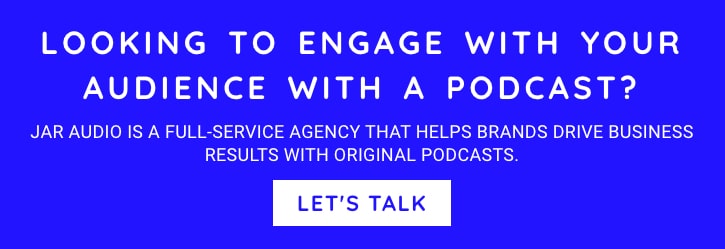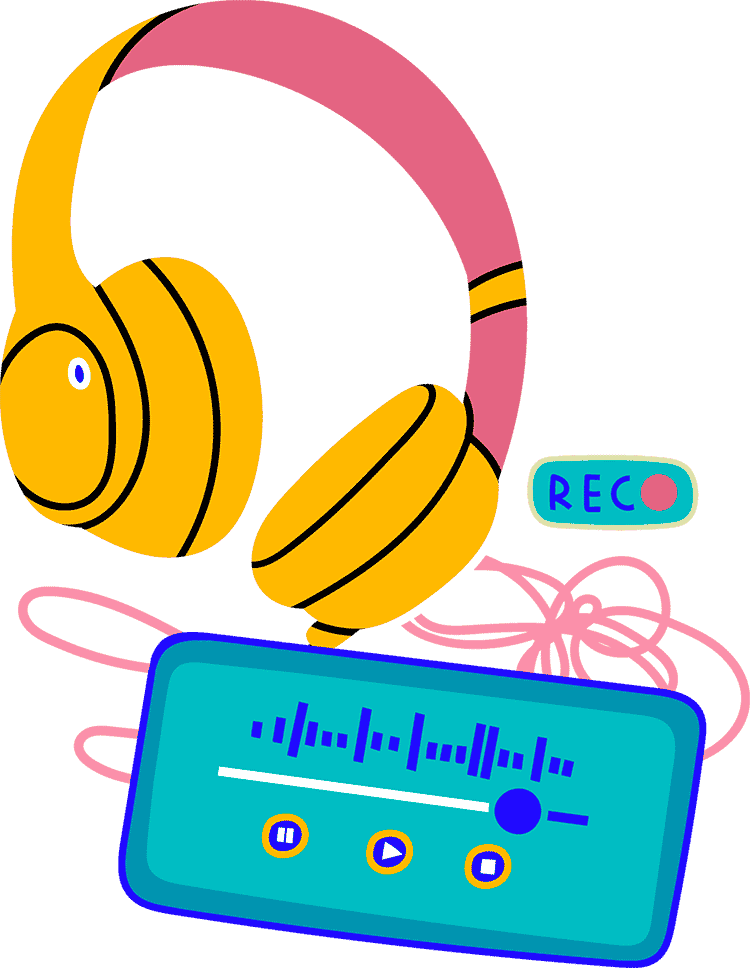How industry leaders turn podcasts into the tool that sets the terms everyone else has to follow.
In the B2B world, the loudest voice isn’t the one with the biggest ad budget, it’s the one that controls the narrative. Your voice is the reference point for buyers, journalists, and even competitor quotes.
Recent research proves the stakes: Edelman-LinkedIn’s B2B Thought Leadership Impact Study 2024 found that thought leadership jumped from 20th to 3rd place globally as a decision driver for business buyers. For Gen Z and Millennial buyers, it now ranks #2 overall as an influence factor.
Owning your category’s narrative is a long-term positioning play. At any given time, 95% of B2B buyers are not actively in-market (LinkedIn B2B Institute, Ehrenberg-Bass Institute), but they are absorbing information. If your voice shapes that ongoing conversation, you’re first in mind when they’re ready to buy.
Why podcasts are a soft power play
Podcasts are an owned channel, unlike rented ad space or social posts subject to algorithm changes. You control:
- The pace: Consistent publishing sets the tempo for what’s “current” in your category.
- The framing: You decide the angles and language used to discuss core issues.
- The guests: You choose who gets the microphone and, by extension, influence.
When your ideas are consistently echoed by analysts, reporters, and even competitors, you’ve moved beyond “content” into soft power—the ability to shape the industry agenda without overtly selling.
From content creator to industry reference: The playbook
To become the show that defines the conversation in your space:
- Pick 3–5 narrative pillars
- These are core truths you want the industry to believe in 12 months.
- Reinforce them repeatedly—repetition builds brand association.
- Book news-making guests
- Target regulators, researchers, innovators, or executives about to make major announcements.
- Time releases to coincide with industry events for maximum relevance.
- Define the terms of the debate
- Create a phrase, framework, or metric others must use to participate.
- Example: A client coined “integration debt,” which became a widely adopted term cited by analysts and competitors.
- Engineer distribution beyond your feed
- Syndicate to trade publications.
- Post clips and highlights on LinkedIn with influencer tags.
- Send “industry moves” recaps to analysts and journalists after each release.
The two-calendar system for maximum impact
Category-leading shows use two editorial calendars:
- Anchor calendar: Predictable, consistent episodes that reinforce your narrative pillars and keep audience habits strong.
- Opportunity calendar: Agile episodes tied to breaking news, product launches, or regulatory changes, which are all recorded and published within days.
The first builds loyalty. The second drives relevance spikes that attract new listeners.
Why video podcasting is now essential
If your aim is category ownership, video isn’t optional anymore.
- Video content generates up to 1200% more engagement than text and images combined (Fusion Studio).
- LinkedIn, YouTube, TikTok, and X give algorithmic priority to native video over audio-only posts.
- Audience habits have shifted: In 2016, 93% of podcast listening happened on Apple Podcasts; in 2024 that dropped to just 12%, with YouTube now the dominant podcast platform (Edison Research).
Video also multiplies repurposing opportunities—vertical clips, quote graphics, and news-timed snippets—all from a single recording session.
Measuring narrative control (not just downloads)
Traditional podcast metrics like downloads and CTRs don’t measure influence. Instead, track:
- Media and influencer echo: Are your key phrases appearing in industry articles or competitor decks?
- Relationship access: Are you receiving inbound speaking, media, or advisory requests linked to the podcast?
- Conversation ownership: Are analysts and competitors using your language to frame issues?
When people quote you in meetings you weren’t in, you’ve crossed from content creation to category control.
The mindset shift leaders make
Most B2B companies treat podcasts as safe, evergreen collateral. Category owners treat them as real-time influence engines.
- From safe to significant: Introduce new terms, challenge industry norms, or publish contrarian views.
- From annual planning to ongoing positioning: Adjust content strategy as the market shifts.
- From approval chain to decision cell: Empower small teams to act quickly without multi-week approval delays.
Engineering term adoption: A case example
One enterprise tech client built their show around a single provocation:
“Tech debt is the silent killer of digital transformation.”
The phrase was barely used before. It originated in 1992, but hadn’t been used in today’s CIO language. Six months later, competitors, analysts, and journalists were using it—often quoting the original definition.
The deliberate process:
- Coin the term.
- Define it clearly.
- Launch it on your show.
- Seed it with analysts and journalists.
- Track adoption and cite proof internally.
The starting point for your show
Before booking guests or creating a content calendar, ask:
“If I could make three things true in my industry within the next 12 months, what would they be?”
Those truths become your narrative pillars. Every guest, question, and promotional asset should move the market closer to them.
Key takeaway
If your podcast is just documenting your thinking, you’re on the content treadmill. If it’s shaping what your industry talks about next, you’re building category control—and the pricing power, reputation, and influence that come with it.
Roger transitioned from a 22 year career in advertising account management to co-founding JAR, a podcast podcast production agency. As CEO of JAR, he propels the company’s growth by prioritizing audience engagement and podcast marketing. Under his guidance, JAR flourishes with a global clientele, aiming to broaden its reach across North America and revolutionize brand connections through immersive storytelling.



